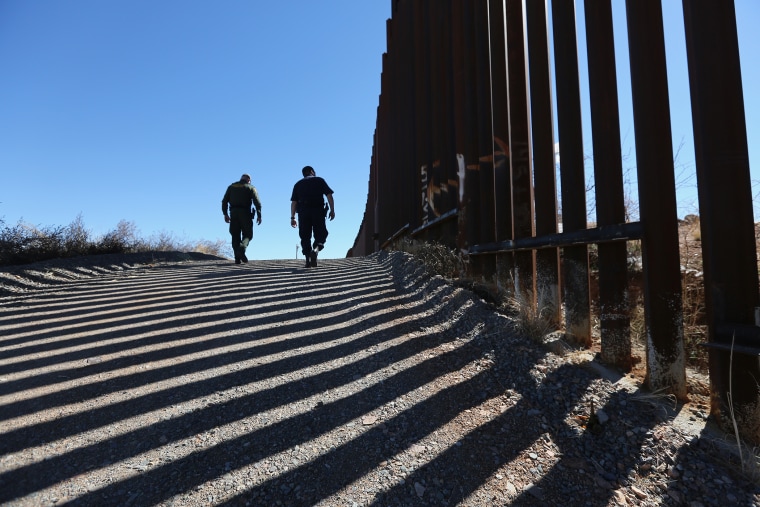A few weeks ago, Donald Trump published a tweet touting "the biggest Fentanyl bust in our Country's history," which had just occurred at the U.S./Mexico border. In this case, the president's claim had the benefit of being true: U.S. Customs and Border Protection officials captured 254 pounds of fentanyl, with a street value of several millions dollars.
But if Trump's missive was intended to prove a larger point about drugs entering the country through Mexico, the details proved problematic: the historic fentanyl bust was made at a port of entry. As Time magazine reported, the drugs were found hidden "in a compartment under the rear floor of a tractor-trailer after a scan during a secondary inspection indicated 'some anomalies' in the load."
Literally the next day, the president sat down with the New York Times and argued, "[U]nlike what the Democrats say, they don't, you don't bring trucks of drugs through the checkpoints. You bring trucks of drugs by making a right 20 miles, and a left into the country."
Except, it's not just what "the Democrats" say; it's what his own administration says. In the case of the fentanyl bust, it's what happened the day before.
Yesterday, something similar happened. USA Today reported:
A commercial shipment of frozen strawberries coming from Mexico contained $12.7 million worth of methamphetamine, U.S. Customs and Border Protection announced Tuesday.The alleged drug-smuggling operation was discovered at the cargo facility at the Pharr-Reynosa International Bridge in southern Texas on Feb. 16, a release says. Officers found 906 pounds of the drug concealed in a trailer, CBP says.A 42-year-old man who is a Mexican citizen was arrested in connection with the seizure, according to the release.
To be sure, this is an enormous drug bust, and one of the White House's prominent media allies was eager to tout the smuggling attempt.
But again, developments like these are emblematic of a larger truth: Trump's talking points are plainly wrong.
What happened at the Pharr-Reynosa International Bridge is what usually happens: drug smugglers tried to bring their product into the United States at a port of entry. According to the DEA, the vast majority of the time, this is how the drug trade works, and it would be unaffected by a giant border wall.
If the president wants to argue that drug smuggling across the border is a problem, he's right, but it's not a controversial point. What Trump actually argues, however, is that the evidence about how and where drugs enter the country shouldn't be believed, while his baseless assumptions must be accepted as fact.
Consider the Republican's comments at last week's event announcing an emergency declaration: "[W]e have tremendous amounts of drugs flowing into our country, much of it coming from the southern border. When you look and when you listen to politicians -- in particular, certain Democrats -- they say it all comes through the port of entry. It's wrong. It's wrong. It's just a lie. It's all a lie."
But it's not. As reality keeps demonstrating, the information we receive from the Drug Enforcement Administration and the Customs and Border Patrol appears to be true: drug smugglers wouldn't be stopped by a giant border wall because they already rely on ports of entry.
If substance played a more meaningful role in the debate, the White House could prioritize improved security measures at these entry points -- a measure congressional Democrats have already endorsed and are prepared to invest in. But Trump wants a wall, which leads him and his allies to point to developments at the border that have nothing to do with a wall.
